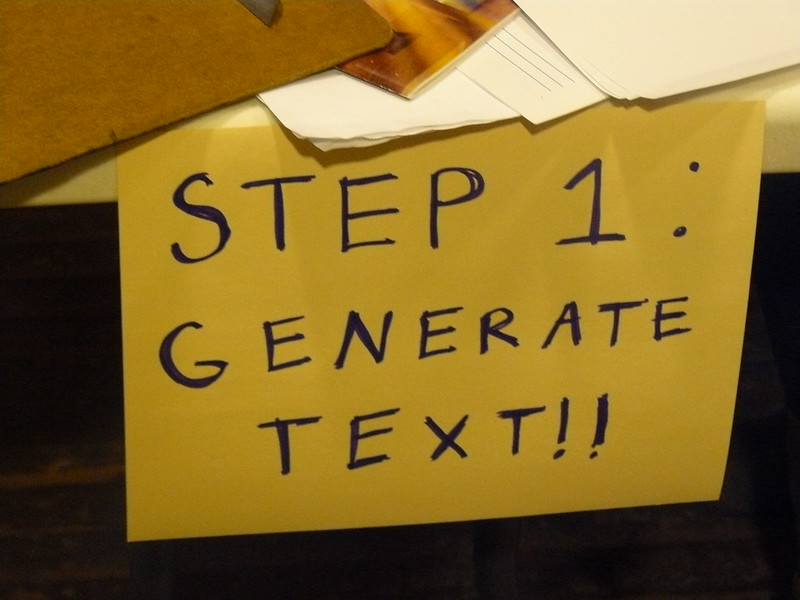
Understanding the term “Education Narrative”
Read and write before class on Wednesday (aka “homework”):
- Read “The Memory of My Grandmother” (City Tech student essay) by Anita Jiang. Remember, this is in a longer document–you only have to read the two-page essay!
- Read “Chapter 7” from the Narrative of the Life of Frederick Douglass by Frederick Douglass.
- Write a short paragraph responding to the Bunn essay: identify one specific moment you found useful and you want to try out as a reader. Quote or paraphrase this moment, and explain why this idea appeals to you.
- Be sure to title the post correctly: Full Name, Discussion of “How to Read Like a Writer”
- Save it under Discussions.
- Hit “Publish”!
During class on Wednesday, we will:
- Reread and annotate “The Memory of my Grandmother” by Anita Jiang, using Bunn’s reading questions on this worksheet.
- Think about Jiang’s Technique: Choose one technique that Jiang used in her essay to bring you into her story. Was it effective? Why or why not?
- Reread and annotate “Chapter 7” by Frederick Douglass, using Bunn’s reading questions.
- Think about Douglass’ Technique: Choose one technique Douglass used to get his ideas across. Was it effective? Why or why not?
Read or Review before class on Monday (once again, this is homework):
Read/Review/Watch:
- Read “Learning to Read” by Malcolm X.
- Review “Double-Entry Reading Journals” (Butte College).
- Watch “Understanding Genre Awareness.”
During class on Monday, we will:
- Create a “double-entry journal” in your notebooks: in the left hand column, write the quotes. Then in the right hand column, explain why it reminds you of your own learning experience (whether that experience was in an actual school setting or elsewhere).
| Direct Quote Pick one quote from each of the readings we did for homework. Choose a quote that reminds you of an experience that you have had. It doesn’t have to be exactly the same–just be sure to pick quotes that you relate to in some way. | Thoughts/Reflections Reflect on why you chose this quote. How/why does it remind you of your own experience? |
| Jiang Quote | |
| Malcolm X Quote | |
| Douglass Quote |
Next, we will…
- Draw three charts in your notebooks (one for each reading we’ve covered so far). On the left side, write speaker, occasion, audience, etc. On the right, answer the corresponding questions you see below:
| Speaker | Who is the narrator? |
| Occasion | What is the context for this piece? |
| Audience | Who is this piece for? |
| Purpose | What is the reason for writing this text? |
| Subject | What is the focus here? |
| Tone | How would you describe the narrator’s language? |
Finally, we will…
- Review the Unit 1 Major Writing Assignment. Then, think about the pieces by Douglass, Malcolm X, and Jiang. Although these pieces are very different, they are all education narratives. What do you think puts them into this category? In other words, what do they have in common? Share your thoughts on this in a Post (this is a low-stakes assignment–worth 30% of your overall grade).
- Be sure to title the post correctly: Full Name, Education Narratives
- Save it under Unit 1 Work.
- Hit “Publish” by the next class!
- In class and on your own (homework):
- Brainstorm topics for Unit 1. As you prepare to write your own educational narrative, set a timer and spend 5-10 minutes brainstorming a quick list of stories, ideas, questions, and moments that are important to your experience.
- Select one of the texts we’ve read so far (Jiang, Douglass, Malcolm X) as a model for your own narrative. The story in the model text does not need to be like yours, but there is something about the way the story is told that you would like to emulate. Identify which text you have chosen as your model and what it is about the way the author composes their narrative (their techniques, strategies, and style) that appeals to you.
- You won’t have to submit anything–yet–but be prepared to share and discuss these items SOON.
During class on Wednesday, we will:
In small groups:
- Read out loud “Allegory of the Cave” (Book VII) from The Republic, by Plato. (You don’t have to read it ahead of time, but if you want to, the section we’re reading starts on page 6!)
On your own (aka homework):
- Write a summary of Plato’s text. What’s going on here? Where are we? Who’s there? What do they look like? What’s happening? Share your summary in a Post (this is a low-stakes assignment–worth 30% of your overall grade).
- Be sure to title the post correctly: Full Name, Summary of Allegory of the Cave.
- Save it under Unit 1 Work.
- Hit “Publish” by the next class!
- Have you ever had an experience where you felt like you were in a “cave” or where you felt like you emerged from a “cave”? Freewrite about that experience. Include as many specific details as possible (think about your five senses when writing: recall what you saw, but also what you heard, smelled…). Hold on to this freewrite, as you may want to return to these ideas for your Unit 1 project.
Upcoming homework for 9/19…
- Watch “The Cave: An Adaptation of Plato’s Allegory in Clay.”
- Watch “Plato’s Allegory of the Cave” by Alex Gendler.





Leave a Reply